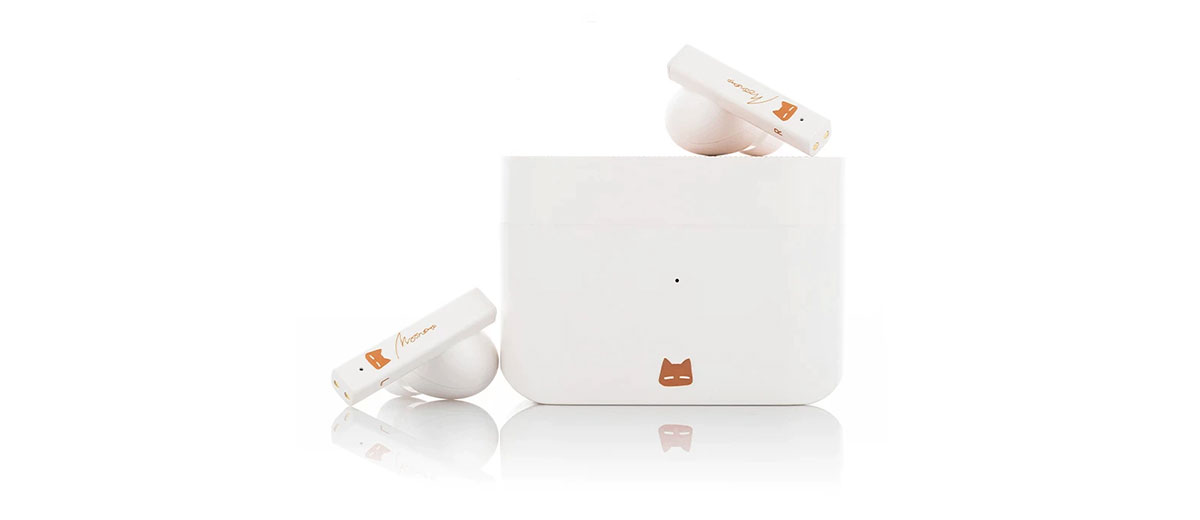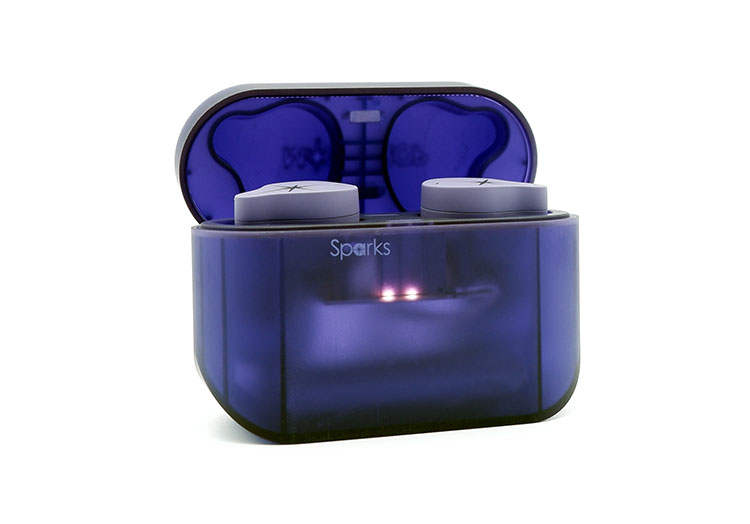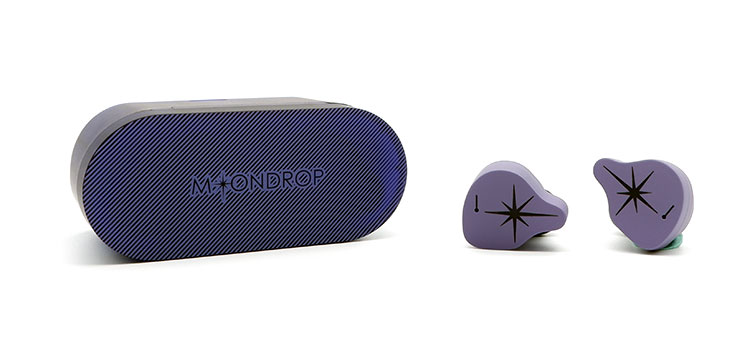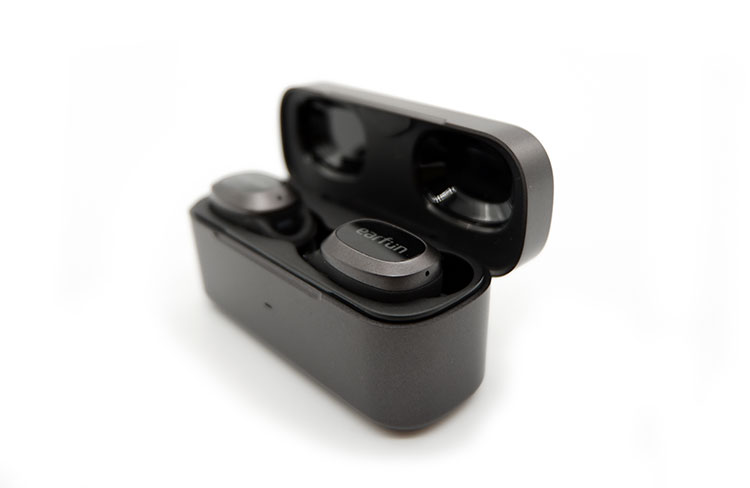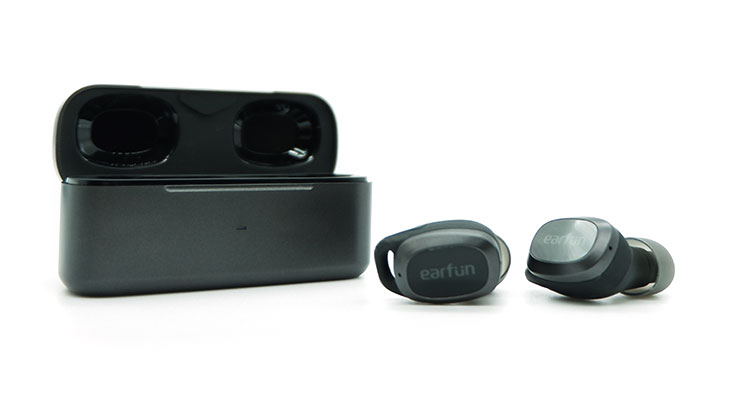Wireless Performance
Despite only being designed with the SBC codec, the Nekocake doesn’t have any noticeable latency, and even when I tried using a latency test video, there was only a maximum of just 0.5mS of latency.
When the Nekocake is connected to my phone, the connection remains generally stable even when I start walking away from my phone.
It’s only when I walk around 10m away from my phone and there is a wall between me and my phone where I would notice that the audio signal starts to drop. I had to go out of my front door which is 15 meters away for the signal to completely drop out.
Select Comparisons
Moondrop Sparks
$89.99
Technical
With both TWS earbuds coming from Moondrop, they are tuned to the same VDSF target curve by default. However, the Sparks achieves this using a smaller 6mm dynamic driver powered by a high-efficiency magnetic circuit.
Aside from the differences in the drivers that are used, the Sparks also has a Qualcomm Chipset that runs on Bluetooth 5.2 while having AptX, and AptX Adaptive in addition to the standard SBC and AAC codecs.
Furthermore, the Sparks packs more battery life due to its larger size being rated at 8 hours for the earbuds and another 48 hours from the charging case.
Design
Coming from the same brand, there is a physical resemblance between the 2 TWS earbuds with carrying cases that have a similar shape, except that the one that comes with the Sparks is much larger.
However, the earbuds on the Sparks are just earbud shells without stems, this makes them larger and potentially less comfortable for smaller ears while both earbuds remain generally secure through most use cases. Both TWS earbuds are equally comfortable though.
The control options available to the Sparks are more extensive, with options for volume control, play/pause, next track/previous track. The EQ system on the Sparks is also more extensive allowing fine-tuning of the options in addition to having the default tuning modes.
Performance
Being tuned to the same target curve by default, I was expecting that the 2 TWS earbuds would sound the same. And to some extent, the 2 earbuds sound similar, but there are some subtle differences where the Sparks has an overall more even-handed presentation comparatively.
With the bass, the Sparks would initially sound smoother and less taut. However, the more full-bodied and better sense of attack gives the Sparks a more engaging and accurate bass presentation allowing drum hits and bass guitars to sound more convincing.
The Sparks have a more planted fundamental, allowing the vocals to sound more full-bodied at the cost of some sweetness. This makes the vocals sound comparatively more relaxed while still presenting enough vocal nuance. With instruments like guitars, they are presented with a warmer harmonic tilt.
Between the 2 TWS earbuds, the Sparks has a more subdued treble response. However, the treble presentation on the Sparks is still surprisingly more engaging due to a better sense of bite, making cymbal hits more polished and confident sounding.
Both earbuds don’t have much in terms of soundstage width since both TWS earbuds don’t have soundstage elements extending beyond my head. However, when it comes to the accuracy of the imaging presentation, the Sparks are softer sounding but more accurately placed.
Earfun Free Pro
$59.99
Technical
Both TWS earbuds are in the same price range, so some overlap in features is to be expected, which include ANC modes and touch-sensitive controls. Surprisingly, the Free Pro is capable of Bluetooth 5.2, while still being limited to the same standard codecs such as SBC and AAC.
What’s glaringly absent with the Free Pro is that it doesn’t have any app support, so the touch controls remain how they are out of the box, which includes volume controls among others. Also, there are no EQ controls with the Free Pro, so they don’t have the versatility that the Moondrop Link App offers.
Despite the smaller size, the Free Pro has more battery life with each earbud being capable of 8 hours for each charge, while the charging case offers 32 more hours of playtime. Finally, the Free Pro even has quick charging and wireless charging features built into its charging case.
Design
The design of the 2 devices is very different, with the Free Pro being the smaller of the 2 TWS. Despite the size, it doesn’t give the Free Pro any edge in terms of comfort. Both devices are equally comfortable because of the proper ergonomic design.
The carrying case on the other hand is more compact despite having a larger battery capacity. Also, the placement of the USB-C charging port is more traditional on the Free Pro being located at the rear of the device.
Both TWS earbuds have battery indicators on the charging case, but the Free Pro also has status indicators on the earbuds themselves. However, the utility of having an indicator on the earbuds is questionable at best since it would be generally inconvenient to keep looking at the LED on the earbuds during use.
Performance
Despite the similarity in their price range, the 2 IEMs seem to have been designed for different markets, as the Free Pro has a comparatively darker tonal balance. This makes the bass on the Free Pro more forward, rounded and energetic.
However, when it comes to detail retrieval, the Free Pro takes a step back as most details become smoothed over due to the more bloated bass that bleeds into the other frequencies.
The vocal presentation takes a step back being overshadowed by the dominant bass tuning. When listening to vocals in isolation such as in choral arrangements, the Free Pro still maintains a warmer vocal presentation making it comparatively less engaging.
Midrange instruments are also given a warmer tilt. This makes it harder to listen for the individual strings in guitars making strums and plucks sound more smeared than they ought to be.
Another factor that contributes to the darker tonal balance on the Free Pro is the more subdued treble response. However, it’s surprising to hear that the treble detail retrieval ability and bite on the 2 TWS earbuds are about equal.
Despite the darker tonal balance, the soundstage that’s produced by the Free Pro is wider, where the images formed stay a bit beyond my head. The images formed within the soundstage are less layered making them stay wide despite supposedly being intimate.
Our Verdict
The Moondrop Nekocake is a simpler IEM from Moondrop that maintains some of the premium features of the Sparks such as app integration. While the Nekocake takes the cute aesthetic to a new level by adding it in as the voice prompt, I wish it was more articulate to avoid confusion with the voice prompts.
Sonically, the Nekocake is unmistakably tuned by Moondrop, with the VDSF tuning ensuring that it has a generally balanced tonality that’s only hindered by the ability of the drivers to ultimately resolve the finer details within the music.
However, what sets the Nekocake apart from its competition at this price point is the Moondrop Link app that allows the user to change the tonal balance of the Nekocake. This makes sure that it’s versatile enough to suit different sonic preferences while allowing some customization of controls.
Moondrop Nekocake Specifications
- Bluetooth Version: 5.0
- Protocol Supported: A2DP/AVRCP/HFP/HSP/SBC/AAC
- Impedance: 32Ω±15%@1kHz
- Working distance: up to 10meters
- Charging time: up to 1 hour
- Charging time(Case): up to 1.5 hours
- Battery capacity(earpieces): 37mAh
- Battery capacity(charging case): 380mAh
- Battery Life: up to 4 hours on a single charge, up to 12 hours with the charging case

